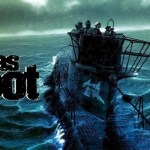For the past few months, I’ve been on a big First World War kick. While I can credit the Gothic horror miniature game “Trench Crusade” with that initial spark, it certainly didn’t end there. After completing a handful of game miniatures, I ventured away from the (still very compelling) fictional game aesthetic. I was looking online at images of trench systems and the differences between those used early vs. later in the war, and why they changed as the conflict wore on.
It led me down a rabbit hole that branched into a couple of different directions. I began studying the US involvement (1917-18) in World War One (also known as “The Great War,” “War to End All Wars”, and “WWI”). I read several of the resource books I have collected over the years. My main area of interest has always been the Second World War. As it turns out, I have a surprising amount of previously unexplored material on the prequel.
In addition to finding an excuse to read every piece of material I own on The Great War, I’ve been watching a lot of YouTube content as well. Many feature quality, historical information, while a handful are rife with inaccurate data and even misleading, altered or entirely AI-falsified photos. It also brought to my attention how many of the Facebook stories passed around about, “This day in military history,” are absolute fiction. Learning how to sort through the nonsense has been an interesting part of the study.


I also started building a few figure kits representing various combatants. They are pretty straightforward, construction-wise. I also gave in to temptation and bought a more detailed kit – a WWI tank model. While I’ve built tanks before, I haven’t taken on significantly more complex ones, for example, kits that employ individual linked tracks or photo etched brass details. This kit also has a detailed interior – another stretch out of my comfort zone. I’m hoping this endeavor is a step towards a new level of skill.

Growing up, I heard that my paternal great uncle Frans was drafted into WWI. My grandfather was a few years younger; and as a result, his number did not come up. Frans was exposed to poisonous gas (likely mustard gas at that point in the conflict) and had breathing difficulties for the rest of his life. I found several pieces of documentation in my search: his original draft registration, some US census records, and a photo of his military headstone at the Rock Island Arsenal National Cemetery. The first online photo I found was blurry, making it difficult to see some of the details. However, with a little more searching, I learned that he served as a private in the 139th Field Artillery. I also found an old, colorized postcard of the unit from that era.
The last few months have been a pretty cool experience. In fact, it’s been a 3-pronged journey. First: a study of the fascinating political climate of the turn of the century and resultant conflict that shaped the next hundred-plus years. Second: an opportunity to take my modeling skills in an unexpected direction – pushing my comfort zone and challenging myself to grow. And finally: a peek into the lives of ancestors who are becoming more than vague names and dates on yellowed paper in cardboard boxes. They were, in fact, real people who were born, lived entire lives, and died. They no longer need to stay forgotten. And all this discovery out of a single project – that’s pretty cool.

-Toph
P.S. – Drop me a note about your own forays into the past. I truly enjoy the emails I get, from old friends as well as new ones.
Until next time – cheers!



















